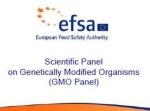In October plant biologist Dr. Jonathan Latham who began his doctoral research by creating GMO foods, published an article saying that commercial interests are beginning to ‘run ahead’ of scientific knowledge.
17 leading cancer experts on the World Health Organization’s (WHO) cancer research committee in March agreed to classify glyphosate as a probable human carcinogen. As we reported in March, the Wall Street Journal and Financial Times published Monsanto’s call for the World Health Organisation’s cancer agency to retract a report published in the journal Lancet Oncology by researchers for WHO’s International Agency for Research on Cancer.
An earlier study published in the journal Toxicology supports the findings of the WHO scientists that pesticides, such as Roundup, also contain additives (adjuvants), which increase the pest or weed-killing activity of the pesticide and do not have to be tested in medium and long-term tests.
This appears to have been known as far back as 1996, according to a Pesticides Action Network factsheet: It said that in pure chemical terms glyphosate is an organophosphate in that it contains carbon and phosphorous. However, it does not affect the nervous system in the same way as organophosphate insecticides, and is not a cholinesterase inhibitor:
“While glyphosate itself may be relatively harmless, some of the products with which it is formulated have a rather less benign reputation. Marketed formulations of glyphosate generally contain a surfactant. The purpose of this is to prevent the chemical from forming into droplets and rolling off leaves which are sprayed. Some of these surfactants are serious irritants, toxic to fish, and can themselves contain contaminants which are carcinogenic to humans”.
Alternet summarises: glyphosate by itself doesn’t cause cancer but it is likely that, in products which contain glyphosate and other additives and chemicals, the genotoxic effects observed in some glyphosate-based formulations are related to the other constituents or “co-formulants.
However, this year, scientists who compiled the European Food Safety Authority’s peer review report – with only one exception – found that the weed killer glyphosate, present in the widely used product ‘Round Up’, is not likely to be carcinogenic.
An Open Letter was sent to Commissioner Andriukaitis, European Commissioner for Health and Food Safety, on 29th October 2015. Campaigners called on him to ensure an open, scientifically robust process – and to immediately restrict the herbicide. In addition, an expert task force, which was set up to illuminate similar differences between two WHO bodies, the IARC and the Joint Meeting on Pesticide Residues (JMPR), concluded that the Joint FAO/WHO Meeting on Pesticide Residues (JMPR) which assessed glyphosate as non-carcinogenic, had to redo its work, properly taking into account published peer-reviewed literature.
The WHO then created an “ad hoc expert task force“ to consider possible reasons for the different assessments of the data by IARC and the JMPR. It was scheduled to report back to in September 2015 for further discussion and action but no news of its findings has been found by the writer. This process is known as a scientific divergence procedure within the WHO.
Though the World Health Organisation’s lead scientist disputes EFSA’s findings, new, lower EU safe limits for exposure to glyphosate will be recommended for those using it and for residues in food.
–
COMMENT from Devon farmer







Recent Comments